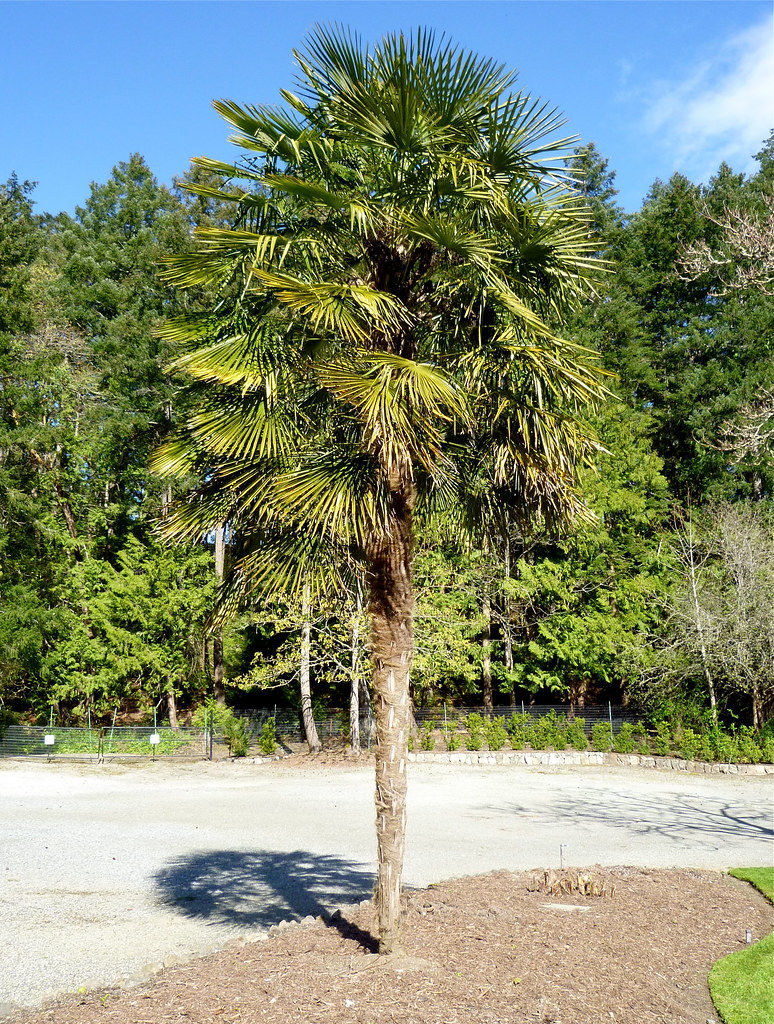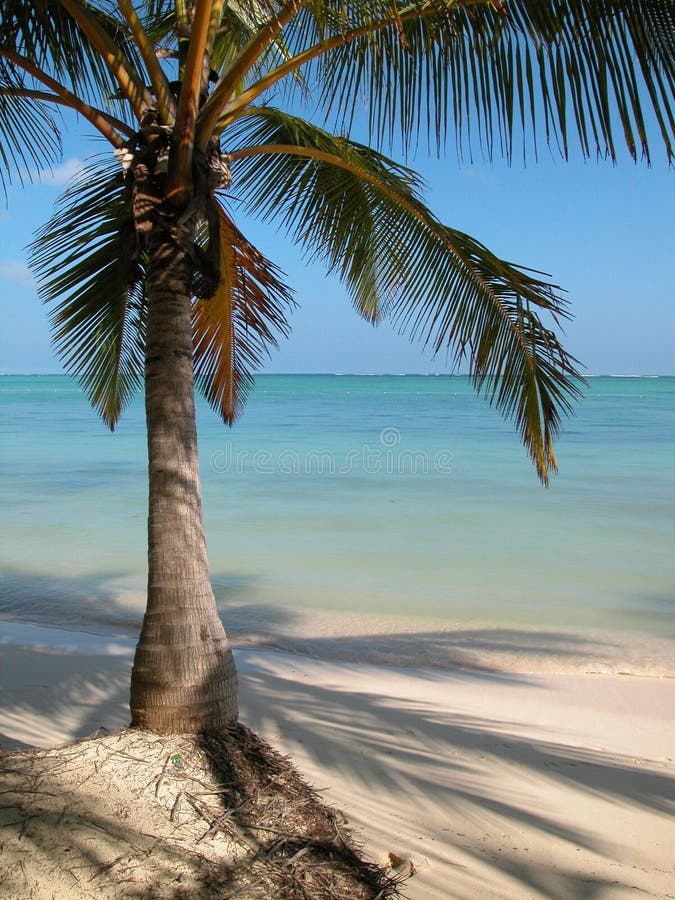
Dominican Republic Palm Trees Logan MB Photography
Bismarckia nobilis is low-maintenance and easy to cultivate. This palm exhibits cold hardiness, enduring temperatures as low as 25°F (-4°C), making it a suitable choice for USDA zones 9b-11. 2. Blue Hesper Palm Tree (Brahea armata) Blue Hesper Palm Tree (Brahea armata).

More Palm Trees in Punta Cana...really beautiful... Punta Cana, Palm
2. Ease the tree into position, making sure the top of the root ball is slightly lower than the level of the adjacent ground. Typically, the top of the tree's root ball should remain only 1 or 2 inches (2.5 or 5.1 cm) below the ground when the tree is seated and the hole is filled all around (backfilled). 3.

PlantFiles Pictures Cuban Wax Palm, Cana Palm, Blue Yarey Palm
Palm trees can produce oil, lumber, woven materials, multiple food sources, drinks, insulation, and so much more. In many regions, palm trees are a vital resource used in everyday life, often for a plethora of these purposes. Along with being extremely useful, they are a beautiful sight. Before we dive deeper into the properties of a palm tree.

Fan Palm Tree Punta Cana Palm trees, Fan palm, Punta cana
Beginning in March 1931, the city put 400 unemployed men to work planting trees alongside 150 miles of city boulevards. Mexican fan palms—then costing only $3.60 each—were spaced 40 to 50 feet apart. Today, many of the palm trees planted in the 1930s are nearing the end of their natural life spans. The recent arrival of the red palm weevil.

Tropical Paradise Idyllic Caribbean Palm Trees with Sunbeam in Punta
Kentia Palm ( Howea forsteriana) Kentia palm is a slow growing ornamental tree that is popular in California. The Kentia palm is a slow-growing non-native palm tree that commonly grows in California. The elegant and stately palm tree has arching, feather-like, deep green leaves measuring 12 ft. (3.7 m) long.

indoor palm trees, indoor plants, palm tree indoor plants, indoor palm
Hardy down to 20 degrees Fahrenheit, the Mexican fan palm is a popular indoor and outdoor tree. It has a single trunk topped with arching, fan-shaped leaves that grow up to 5 feet long. Unless you trim this palm tree regularly, the dead leaves will form a characteristic "hula skirt" around the trunk.

1024x768 wallpaper Hotel, Palms, Caribbean, Punta Cana, palm tree
The Spruce / Kara Riley. The star-shaped leaves of Chinese fan palm (Livistona chinensis) set it apart from other palms with feathery fronds.Despite slow growth, its mature height can reach 15 feet or taller. Seek out the subglobosa dwarf cultivar if you plan on growing this palm indoors.. Chinese fan palms do well in bright light, but younger plants can tolerate shadier locations.

Palm Tree in Punta Cana, photo, 1404279
Palm tree is a common name of perennial lianas, shrubs, and trees. They are the only members of the family Arecaceae, which is the only family in the order Arecales. They grow in hot climates. There are about 2600 species of palm trees, most of them living in tropical, subtropical, and warm temperate climates .

Can A Palm Tree Live Indoors Gallery
4) Chinese Fan Palm (Livistona chinensis) Credit: Bloomscape. It would be difficult to miss the beauty of the Chinese Fan Palm (Livistona chinensis) with its attractive foliage and upright growth habit. This big, sub-tropical palm tree is also known as Fountain Palm.

Can A Palm Tree Live Indoors Gallery
Feed your palm regularly during its growing season. If possible, choose a palm fertilizer, which contains all the required micronutrients for a healthy palm, as well as extra potassium and manganese. Potassium deficiency is especially common in palms and can result in yellowing or brownish fronds.

Palm Trees of Canada SkyscraperPage Forum
Phoenix canariensis, the Canary Island date palm or pineapple palm, is a species of flowering plant in the palm family Arecaceae, native to the Canary Islands off the coast of Northwestern Africa. It is a relative of Phoenix dactylifera, the true date palm. It is the natural symbol of the Canary Islands, together with the canary Serinus canaria.

Punta Cana Palm Tree stock image. Image of caribbean, palm 3954003
Watering Needs: When the top 1/2 - 1 inch of soil is dry. Sun Exposure: Sun to Part Shade. The Ivory Crownshaft Palm, like the Ivory Cane Palm, has a yellow to the white crown with green leaves that grow up to 30′ tall. Unlike the Ivory Cane, it has a single trunk instead of a cluster of stems.

Punta Cana Palm Tree Photograph by Rob Huntley Fine Art America
When the Canary Island palm trees were introduced to the USA, nobody expected them to be so popular. From the avenues of downtown Los Angeles, California to the sprawling gardens of the Everglades, Florida, the Canary palm tree brings grace and elegance to every corner and entryway. If you have enough space in your garden or lawn to accommodate a tree of its stature, then the Canary island.

Canary Island Date Palm Tree (phoenix canariensis) Urban Palms
Tall palm trees are a type of single-stemmed palm tree with smooth or rough trunks and a crown of arching fronds. These tall, elegant palms typically grow in tropical regions and are common in California, Florida, and other southern states.These palms typically grow between 60 to 100 feet tall. The most common tall palm trees are the royal palm (Roystonea regia), Canary Island date palm.

PlantFiles Pictures Cuban Wax Palm, Cana Palm, Blue Yarey Palm
The California fan or Washingtonia filifera is the only native plant in the state and is the single native variety in the western US. 10 Other trees in the region were only introduced in the late 1870s as the area was establishing itself as a semi-tropical holiday spot. 2 California Palm Trees Height: California Fan Palm Height
/https://tf-cmsv2-photocontest-smithsonianmag-prod-approved.s3.amazonaws.com/6292bd1d-abbc-48ec-b463-73d306e8d4e9.jpg)
Palm Trees in Paradise! Punta Cana, Dominican Republinc Smithsonian
Also known as the Cascade Palm, Chamaedorea cataractarum grows in soft, dense clumps. Lush, hardy, and tolerant of a wide range of light conditions, it's considered one of the easiest palms to grow indoors. Light: bright, indirect light to shade. Water: Keep soil consistently moist but not soggy.